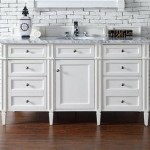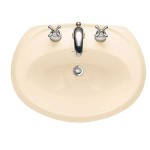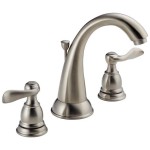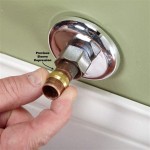Standard Height for Bathroom Drain Installation: A Comprehensive Guide
The proper installation of a bathroom drain is crucial for ensuring effective water drainage, preventing water damage, and maintaining the overall functionality and hygiene of the bathroom. One of the critical aspects of drain installation is adhering to standard height guidelines. These guidelines are designed to ensure compatibility with plumbing fixtures, efficient water flow, and ease of maintenance. Deviating from these standards can lead to a range of problems, including slow drainage, leaks, and potential structural damage. This article delves into the standard height considerations for bathroom drain installation, exploring the rationale behind them, the different types of drains, and common issues that arise from improper height placement.
Understanding the standard height for bathroom drains is essential for plumbers, contractors, homeowners undertaking DIY renovations, and anyone involved in bathroom design or construction. Failure to adhere to these standards can result in costly repairs and modifications. While specific codes and regulations may vary depending on the jurisdiction, general principles and best practices remain consistent across most regions. This guide aims to provide a comprehensive overview of these principles, offering practical insights into achieving optimal drain installation.
Key Considerations for Bathroom Drain Height
Several factors influence the standard height specifications for bathroom drains. These factors are interconnected and contribute to the overall efficiency and functionality of the drainage system. Understanding these considerations is crucial for making informed decisions during the installation process.
Fixture Compatibility: Bathroom sinks, showers, and bathtubs all have different height requirements for drain connections. The drain height must align with the outlet of the fixture to ensure a seamless connection. For example, a sink drain typically requires a lower position compared to a shower drain. Manufacturers provide specific height recommendations for their fixtures, which should be consulted during the planning phase.
Slope and Gravity: The effectiveness of a drain relies heavily on gravity. The drainpipe needs to have a sufficient slope to allow water to flow freely from the fixture to the main drain line. The standard slope is typically a quarter of an inch per foot of horizontal run. Insufficient slope can cause water to pool in the drainpipe, leading to clogs and slow drainage. The height of the drain connection point significantly impacts the overall slope achievable within the drainage system.
Trap Placement: A P-trap is a critical component of any drain system. It is designed to hold a small amount of water, which creates a seal that prevents sewer gases from entering the bathroom. The P-trap must be positioned correctly in relation to the drain outlet. The height of the drain determines the available space for the P-trap and influences its effectiveness in preventing sewer gas leaks. Insufficient vertical space can compromise the trap's ability to function properly, leading to unpleasant odors and potential health hazards.
Accessibility and Maintenance: The drain height should also allow for ease of access for maintenance and repairs. Being able to access the drain easily simplifies tasks such as clearing clogs or replacing drain components. A drain installed at an awkward or inaccessible height can make maintenance more difficult and potentially lead to damage to surrounding fixtures or walls.
Specific Drain Height Standards for Different Bathroom Fixtures
The standard height for bathroom drains varies based on the specific fixture being installed. Each fixture type has unique requirements based on its design and intended use. Understanding these differences is crucial for ensuring proper drainage and preventing compatibility issues.
Bathroom Sink Drains: The standard height for a bathroom sink drain outlet is typically between 20 to 24 inches above the finished floor. This height is designed to accommodate the standard height of bathroom vanities and sinks. The drainpipe leading to the P-trap should be positioned within this range to allow for a smooth connection. It is important to consider the specific dimensions of the sink and vanity being installed, as variations in these dimensions may require slight adjustments to the drain height.
Shower Drains: Shower drains are typically positioned flush with the shower floor or slightly recessed. The standard height for the drainpipe connection is usually determined by the type of shower base or shower pan being used. For pre-fabricated shower bases, the drain outlet is often pre-determined by the manufacturer. For custom-built showers, the drain height needs to be carefully planned during the construction process. The slope of the shower floor should be sufficient to direct water towards the drain, which impacts the overall positioning of the drain outlet. Generally, the drain connection will be a few inches below the shower floor to accommodate the trap and connection pipes.
Bathtub Drains: Bathtub drains typically have a similar configuration to shower drains, with the drain outlet positioned flush with the bathtub floor. The height of the drainpipe connection is determined by the design of the bathtub and the type of drain assembly being used. Some bathtubs have integrated drain systems, while others require separate drain components. The drain height should be aligned with the bathtub's drain opening to ensure a watertight seal and efficient drainage. The drain connection would typically be positioned several inches below the tub floor to accommodate the trap and drain pipes.
Toilet Drains: Toilet drains typically utilize a flange that sits flush with the finished floor. The height of the drainpipe itself is less critical, as the flange provides a secure and level connection to the toilet. However, the drainpipe should be positioned correctly to align with the flange and the toilet's waste outlet. The drainpipe should be of sufficient diameter to handle the flow of waste and prevent clogs.
Common Problems Associated with Incorrect Drain Height
Installing bathroom drains at the wrong height can lead to a variety of problems that can compromise the functionality and integrity of the plumbing system. These problems can range from minor inconveniences to significant structural issues. Understanding these potential pitfalls is essential for avoiding costly mistakes during the installation process.
Slow Drainage: One of the most common problems associated with incorrect drain height is slow drainage. If the drainpipe does not have sufficient slope, water will not flow freely and can pool in the drainpipe. This can be caused by a drainpipe being too high, which reduces the available slope, or a drainpipe being too low, which can create a backflow situation. Slow drainage can lead to the accumulation of soap scum, hair, and other debris, which can eventually cause clogs.
Leaks: Incorrect drain height can also contribute to leaks. If the drainpipe is not properly aligned with the fixture outlet, or if the connections are not tight, water can leak around the drain assembly. Leaks can cause water damage to surrounding walls, floors, and ceilings, leading to mold growth and structural deterioration. Ensuring that the drain height is accurate and that all connections are properly sealed is crucial for preventing leaks.
Sewer Gas Leaks: The P-trap is designed to prevent sewer gases from entering the bathroom. If the drain height is incorrect, the P-trap may not function properly, allowing sewer gases to escape. Sewer gases can contain harmful compounds such as methane and hydrogen sulfide, which can be detrimental to human health. Ensuring that the drain height allows for proper P-trap placement is essential for preventing sewer gas leaks.
Increased Maintenance: Drains installed at improper heights can be more difficult to access and maintain. This can make tasks such as clearing clogs or replacing drain components more challenging. Inaccessible drains can also lead to damage to surrounding fixtures or walls during maintenance. Properly positioning the drain at a height that allows for easy access can simplify maintenance and reduce the risk of damage.
Code Violations: Building codes typically specify minimum and maximum height requirements for bathroom drains. Installing drains at the wrong height can result in code violations, which can lead to fines or the need for costly repairs to bring the plumbing system into compliance. Consulting with local building codes and regulations is essential for ensuring that the drain installation meets all applicable requirements.
In summary, the installation height of bathroom drains is a critical factor in ensuring proper water drainage, preventing leaks, and maintaining a healthy bathroom environment. Adhering to standard height guidelines for each fixture type, considering the slope of the drainpipe, and allowing for proper P-trap placement are essential for achieving optimal drain performance. Avoiding common pitfalls associated with incorrect drain height can save time, money, and potential health hazards. It is always recommended to consult with a qualified plumber or contractor to ensure that the drain installation is done correctly and in accordance with local building codes.

Standard Vanity Height With Vessel Bathroom Sink Drain Kitchen Countertop Faucets

What Is The Standard Bathroom Sink Height Vanity Sizes Drain Counter Top

Ada Bathroom Sink Height Check More At Http S2pvintage Com 19799 Drain Kitchen Countertop Faucets

Ada Compliant Bathroom Sinks And Restroom Accessories Laforce Llc

Bathroom And Restroom Measurements Standards Guide

Pin On Diagram

Design House Pvc Rough In Bath Drain Kit With Overflow 522458 The Home Depot

The Rules Of Good Bathroom Design Ilrated

7 Important Ada Restroom Requirements For Your Commercial Space

Bathroom Vanities Buy Vanity Furniture Cabinets Rgm Distribution
Related Posts







